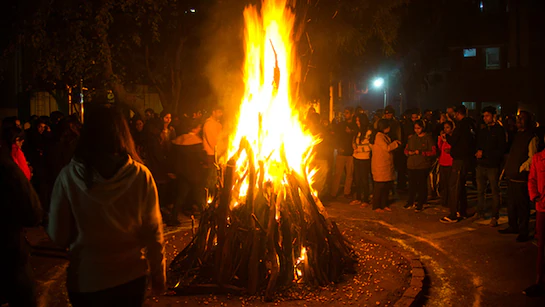Vibrant Basant Panchami Celebrating Spring’s Arrival
India’s festivals are centered around harmony and community. In fact, without delicious food and happiness, the celebration’s fun and games are just not complete.
As spring officially arrives, it’s time to celebrate the festival of Basant Panchami. primarily celebrated as Saraswati Puja in eastern India, particularly in Bihar and West Bengal. In Rajasthan, wearing a jasmine garland to celebrate the festival is part of the customs, but Basant Panchami is celebrated as a kite festival in North India, particularly in Punjab.
In addition, Hindus believe that Panchami heralds the arrival of spring. It occurs on the fifth day of the Magha maas (month) in the Hindu calendar. It is thought that on this day in Hindu mythology, Lord Brahma created the universe. Aside from that, some regions of the nation observe Saraswati Puja because it was thought that this was the day that Goddess Saraswati was born to Goddess Durga.
Basant Panchami is represented by the color yellow, which is favored by the goddess Saraswati. As a result, Maa Saraswati’s adherents wear yellow. In addition, mustard crop harvesting season is indicated by yellow. Traditional foods were cooked and shared with all in honor of “Basant.” Yellow is a hue associated with vitality, wealth, and harmony. Everyone feels more optimistic as a result. Basant Panchami, in full bloom, is marked by traditional yellow attire and foods with yellow hues.
The Background of Vasant Panchami
The reason we celebrate Basant Panchami is rooted in a number of beliefs. Many people believe that this is the day that Lord Brahma created the universe and life on Earth, but the Hindu story attributes her birth to the goddess Saraswati.
A Hindu mythological story states that the earth was created by Lord Brahma on the day of Vasant Panchami. Once upon a time, Lord Brahma, filled with joy at the creation of the world, set out to explore it, only to be disheartened by the overwhelming silence. Every living thing on Earth felt incredibly alone. Thus, after Lord Brahma poured some water from his pot, a goddess appeared holding a Veena, a musical instrument.
Another widely held misconception concerns the life of renowned Sanskrit poet Kalidasa. The story goes that Kalidasa chose to commit suicide by plunging into a river because he was so depressed over his wife’s breakup. Subsequently, the river goddess Saraswati appeared and asked him to take a dip in the sacred water. As a result of the goddess bestowing wisdom upon Kalidasa, he became a well-known poet in modern times.
Another legend states that the day is known as Vasant Panchami because Lord Rama, who was thought of as an incarnation of Lord Vishnu, consumed the partially eaten fruits of Mata Sabari.
How will 2023’s Vasant Panchami be observed?
Vasant Panchami 2023 is a festival that people celebrate with great joy and happiness throughout the nation, though it is celebrated differently in different regions. Numerous Hindus celebrate the day by dressing in yellow, particularly Bangalis, making and sharing yellow-colored pastries and saffron rice, and adorning their homes with yellow flowers. On this day, some people also observe a fast, abstain from food, and honor the goddess Saraswati.
In states like West Bengal, Tripura, and Bihar, a number of schools and colleges commemorate the day by holding kid-only Saraswati Pujas.
When young children begin to learn, an Odisha custom known as Khadi-Chuan or Vidya Arambha is organized. Pitra-Tarpan is a customary ritual that many people carry out in remembrance of their ancestors.
In the states of Madhya Pradesh, Maharashtra, and Chattisgarh, people bathe in the mornings and worship Shiva and Parvati with mango leaves and festive sweets. Newlyweds visit temples together on this day.
You now know that the Hindu festival of Vasant Panchami dates back thousands of years and signifies the start of numerous auspicious occasions, including Holi. In Indian culture, the day is very important, and people pray to the goddess Saraswati, who is associated with wisdom, knowledge, and education. The color yellow serves as the celebration’s theme. In the Sikh community, where kite flying is common, it holds special significance.
Read More: Expressions of love celebrated throughout Valentine’s week











